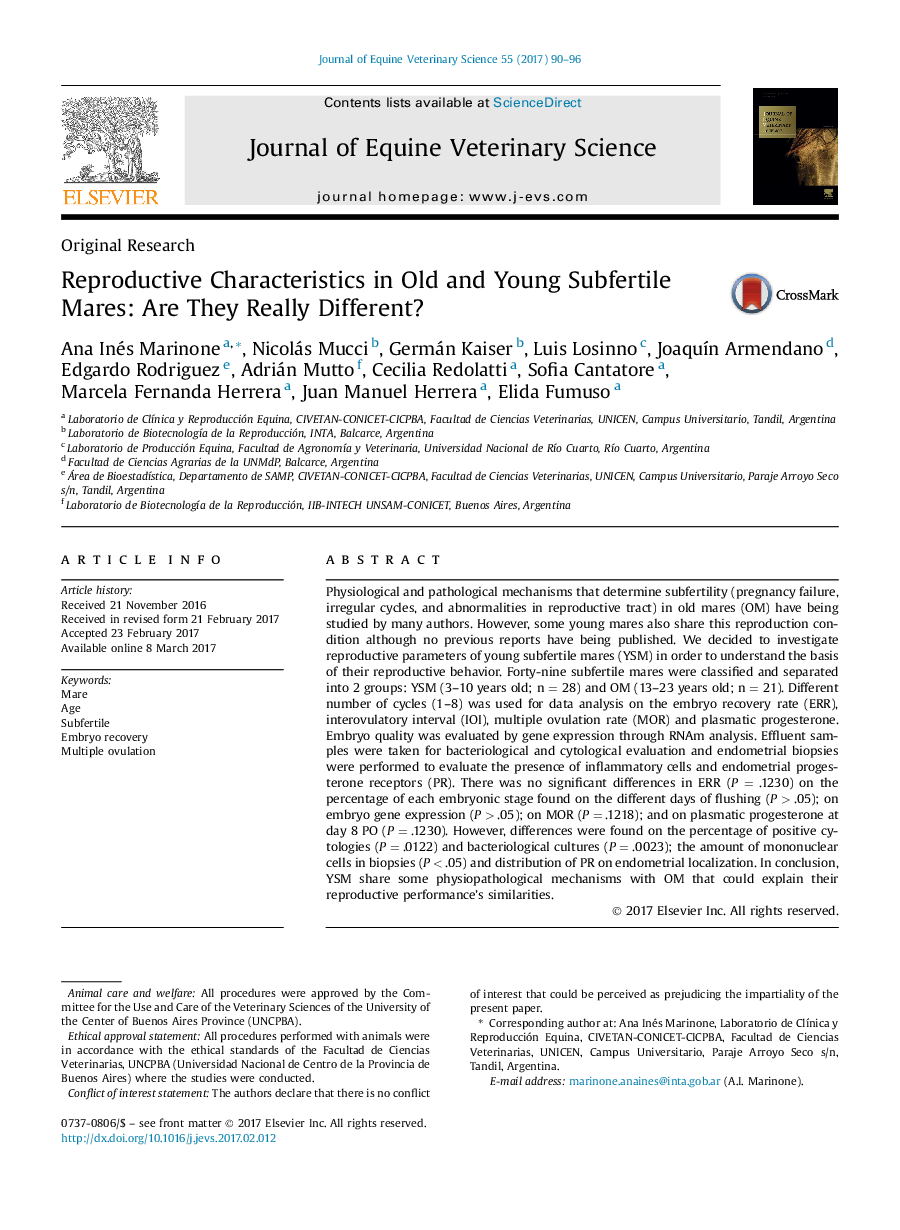| کد مقاله | کد نشریه | سال انتشار | مقاله انگلیسی | نسخه تمام متن |
|---|---|---|---|---|
| 5535590 | 1551545 | 2017 | 7 صفحه PDF | دانلود رایگان |
- We compare reproductive behavior between two age groups of subfertile mares.
- Young subfertile mares have similar reproductive behavior to old mares.
- In old mares, we found additional alterations related to uterine function which could be responsible for embryonic loss.
Physiological and pathological mechanisms that determine subfertility (pregnancy failure, irregular cycles, and abnormalities in reproductive tract) in old mares (OM) have being studied by many authors. However, some young mares also share this reproduction condition although no previous reports have being published. We decided to investigate reproductive parameters of young subfertile mares (YSM) in order to understand the basis of their reproductive behavior. Forty-nine subfertile mares were classified and separated into 2 groups: YSM (3-10 years old; n = 28) and OM (13-23 years old; n = 21). Different number of cycles (1-8) was used for data analysis on the embryo recovery rate (ERR), interovulatory interval (IOI), multiple ovulation rate (MOR) and plasmatic progesterone. Embryo quality was evaluated by gene expression through RNAm analysis. Effluent samples were taken for bacteriological and cytological evaluation and endometrial biopsies were performed to evaluate the presence of inflammatory cells and endometrial progesterone receptors (PR). There was no significant differences in ERR (P = .1230) on the percentage of each embryonic stage found on the different days of flushing (P > .05); on embryo gene expression (P > .05); on MOR (P = .1218); and on plasmatic progesterone at day 8 PO (P = .1230). However, differences were found on the percentage of positive cytologies (P = .0122) and bacteriological cultures (P = .0023); the amount of mononuclear cells in biopsies (P < .05) and distribution of PR on endometrial localization. In conclusion, YSM share some physiopathological mechanisms with OM that could explain their reproductive performance's similarities.
Journal: Journal of Equine Veterinary Science - Volume 55, August 2017, Pages 90-96
